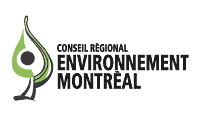Les Amis du Parc Meadowbrook (Les Amis) expressed full support for the creation of a Falaise Saint-Jacques Nature Park in a brief presented to the L’Office de consultation publique de Montréal (OCPM) on November 20.
The OCPM hearings focused on the City of Montreal’s proposal to create a 30-hectare nature park beside the new Turcot interchange, including a lake, forested areas and a north-south link over the highway for pedestrians and cyclists.
“The City of Montreal’s determination to create a Falaise Saint-Jacques Nature Park that brings together the forested Falaise Saint-Jacques —currently designated as an Eco-territory—and the former Turcot Rail Yards is applauded by Les Amis du Parc Meadowbrook and other environmental groups, as well as thousands of residents from the CDN/NDG and Southwest boroughs, and residents from across the island who want the City to protect wilderness, wetlands, green spaces and former farmland from development as much as possible,” the brief said.
A park on the Falaise, a long escarpment beside the Turcot area, would help relieve pressure on the overused Mount Royal Park, Les Amis continued, adding that a similar park at nearby Meadowbrook would do the same. Both would decrease vehicular traffic across CDN/NDG, lower greenhouse gas emissions and improve overall traffic flow.
Les Amis was created by citizens 29 years ago to protect the Meadowbrook golf course from residential development. Its current goal is to turn that 57-hectare property into a nature park. The brief noted that, although the Falaise Saint-Jacques and Meadowbrook are not contiguous, they are interconnected since wildlife use both areas. The existing railway corridor provides a link for animals to travel between the two sites. In addition, a pedestrian and cycling corridor could be created between these two parks.
The brief added that the Falaise Saint-Jacques has been the site of illegal dumping for years. As a park, it would be cleaned up, replanted with native plant species where necessary, and the animals that live there would be better protected.
The Falaise Saint-Jacques Nature Park would also provide an opportunity to highlight the history of Lac à la Loutre, also known as Lac Saint-Pierre. The lake, which no longer exists, was fed from the west by the St. Pierre River which has been buried for decades. One of the few remaining open sections of this river is at Meadowbrook.
Les Amis noted that the plan for the Turcot section of the park calls for the creation of a lake, and this lake could be part of a project to daylight a section of the St. Pierre River. Storm water carried by collector sewers could be brought back to the surface to feed a larger lake here, with all of the advantages of a lake, including biodiversity, flood mitigation, and bioremediation.
Finally, Les Amis expressed the hope that the city will create a green corridor of parks around downtown Montreal with Meadowbrook, Mount Royal, the Falaise, the new Turcot park and Angrignon Park as its main components.
You can read our full brief at:
http://ocpm.qc.ca/sites/ocpm.qc.ca/files/pdf/P98/7.11_les_amis_du_parc_meadowbrooks.pdf
You will also find all the documents pertaining to the consultation and the briefs of other groups and individuals at the following address:
http://ocpm.qc.ca/fr/parc-nature/documentation



























